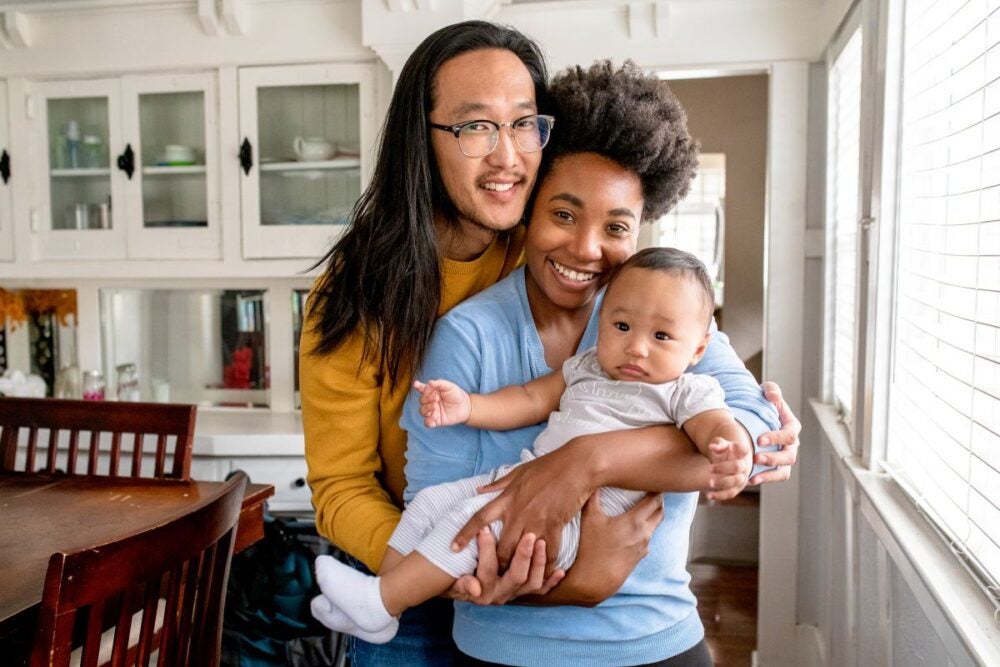Preventing Child Welfare Contact
Connecting Families to Stabilizing Services in Connecticut

Impact Highlight: After the GPL helped Connecticut’s Department of Children and Families gather baseline data and implement a new referral system, the length of time to connect families to services dropped from more than 25 days to fewer than 10.
Project Context:
- In 2020, Connecticut’s Department of Children and Families (DCF) offered more than 90 services to support family stability and reduce entries into foster care. These services included parenting programs, family reunification services, and clinical treatment for parents with mental health or substance use needs.
- Despite so many services, social workers, managers, and agency leadership noticed that families were not always receiving services best suited to their needs. Additionally, many families could not get into the desired services because of long wait lists.
- Some DCF agency staff had started to make local changes in how they matched families to services, but DCF wanted to translate any local innovations into consistent practices to help match families with the right services across all six of their regions.
How the GPL Supported:
- Interviewed agency social workers, supervisors, and leadership to identify barriers that prevented staff from quickly connecting child welfare-involved families to best-fit services. Barriers included:
- Limited time and large case loads among social workers. This meant social workers would often address families’ urgent needs by reaching for familiar, but not always the best-suited, services.
- Limited information on program availability. Supervisors often did not know how many families were waiting, how long they had been waiting, and how this impacted families’ engagement rates once the service did become available.
- Limited communication opportunities. It was difficult for staff to communicate the desired changes to service referral processes with dozens of different service providers throughout the community who were also busy with other responsibilities.
- Helped DCF redesign and streamline the referral process to remove barriers and more effectively assess families’ needs and match them to services. This involved:
- Developing a universal electronic referral form to replace 89 different paper referral forms. This single, clear referral process allowed the agency to collect new, real-time data on referrals and family needs, such as how quickly families are connected with service providers and where mismatches exist between service supply and demand. After initial testing, this new form was integrated into DCF’s case information system.
- Hiring a team of six service coordinators — one to support each region of the state. This team was to support social workers in navigating the parenting skills service array, identify opening slots in a timely manner, and maintain strong relationships with the provider community
- Creating a service array summary so social workers could easily share information with families, especially for underutilized community services designed to meet the needs of specific populations, such as African American fathers.
- Creating a framework so caseworkers and program experts could prioritize families for open slots in services with long waitlists.
- Increased the use of data to inform real-time decisions. This included:
- Scheduling consistent clinical case reviews and multidisciplinary consultations on high-priority cases.
- Implementing a referral log and dashboard that allows leaders to track trends, more easily share insights, and address service-referral delays.
- Established one DCF point of contact for service providers, which reduced referrals that were a poor fit, including those where families were ineligible.
Results:
- DCF connected families to services quicker. After collecting baseline data and implementing the new referral system, the average time between identifying a family’s need and connecting them to services dropped from 25+ days to fewer than 10 days.
- Historical agency data showed that faster connections to services are associated with stronger engagement and service completion rates.
- DCF connected families more often to best-fit services. As soon as the new full-time service coordinators were hired and began reviewing each referral, almost one in every five referrals were adjusted and directed to a different service than the one originally requested.
- Both staff and providers reported that the quality of service matching greatly increased, and the provided services better met families’ needs.
- An analysis of data from early months of service coordination suggests the solution had a positive impact on family outcomes such as reduced removals, subsequent substantiations, and reunification and permanency rates.
- DCF uncovered and addressed mismatches in the supply and demand of existing services, allowing them to shift their service array to better meet families’ needs.
- For example, DCF learned that 44% of families receiving a reunification service only needed one part of the service: the parenting visitation supports. Meanwhile, nearly 200 families per year needed the full reunification service, but could not receive it because the provider was always full. This discovery prompted DCF to explore alternative ways to provide parenting visitation services, which freed up reunification service slots for more families who really need that full service.
Before the [referral] system, we had no way to know how long families were waiting for a service, or even how many families were waiting. Now we can see this in real-time, which allows us to connect families to alternative services faster. We work with vulnerable families in crisis so every day counts.Sergio Alvarez
Systems Program Director, Connecticut Children & Families
Before the enhanced service coordination system, we had to communicate any changes to dozens of gatekeepers across the state, all of them with multiple competing responsibilities, which resulted in little room to improve referrals. The new system allows us to do all that by talking to only six people, all part of a highly integrated, well-trained team.Jenny Vesco
Program Supervisor, Connecticut Children & Families